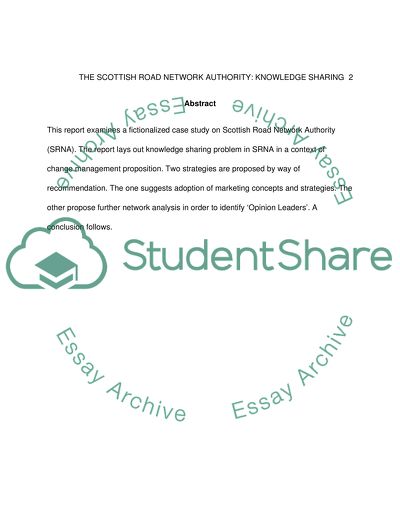Cite this document
(The Scottish Road Network Authority: Knowledge Sharing Assignment - 1, n.d.)
The Scottish Road Network Authority: Knowledge Sharing Assignment - 1. Retrieved from https://studentshare.org/sociology/1558213-research-report
The Scottish Road Network Authority: Knowledge Sharing Assignment - 1. Retrieved from https://studentshare.org/sociology/1558213-research-report
(The Scottish Road Network Authority: Knowledge Sharing Assignment - 1)
The Scottish Road Network Authority: Knowledge Sharing Assignment - 1. https://studentshare.org/sociology/1558213-research-report.
The Scottish Road Network Authority: Knowledge Sharing Assignment - 1. https://studentshare.org/sociology/1558213-research-report.
“The Scottish Road Network Authority: Knowledge Sharing Assignment - 1”, n.d. https://studentshare.org/sociology/1558213-research-report.


